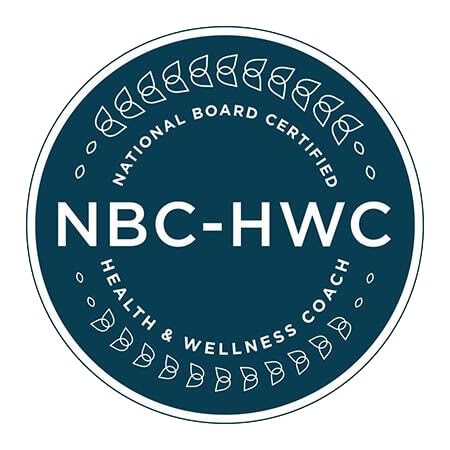Going SUGARLESS; Rucking for Osteopenia
On Good Behavior LLC
Greetings friends!
Here are my “First Thoughts” on mindset, real food and behavior change.
Quote that I am pondering: “Just because you want to become a better version of you doesn’t mean that you aren’t amazing already.” I love this! I find people feel there is implicit criticism in the desire to change; however, you don’t have to put yourself down in order to motivate yourself to be healthier.
What I’m reading: SUGARLESS by Nicole M. Avena, Ph.D.
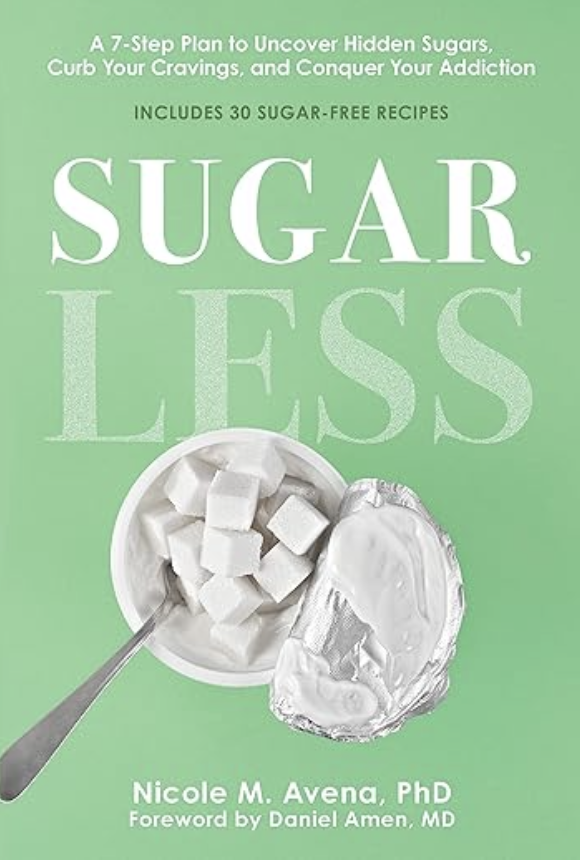
Dr. Avena is a professor at Mt. Sinai and Princeton. As a graduate student at Princeton, she was one of the first researchers to show that sugar is as addictive as cocaine and that the addiction forms through the same pathway. Her book does far more than tell you why sugar is bad for you; it takes you through weaning yourself off of sugar step by step. The first step is identifying all the sources of sugar in your diet. The American Heart Association recommends no more than 25g/day for women, 38g/day for men. Here are some examples of hidden sugar:
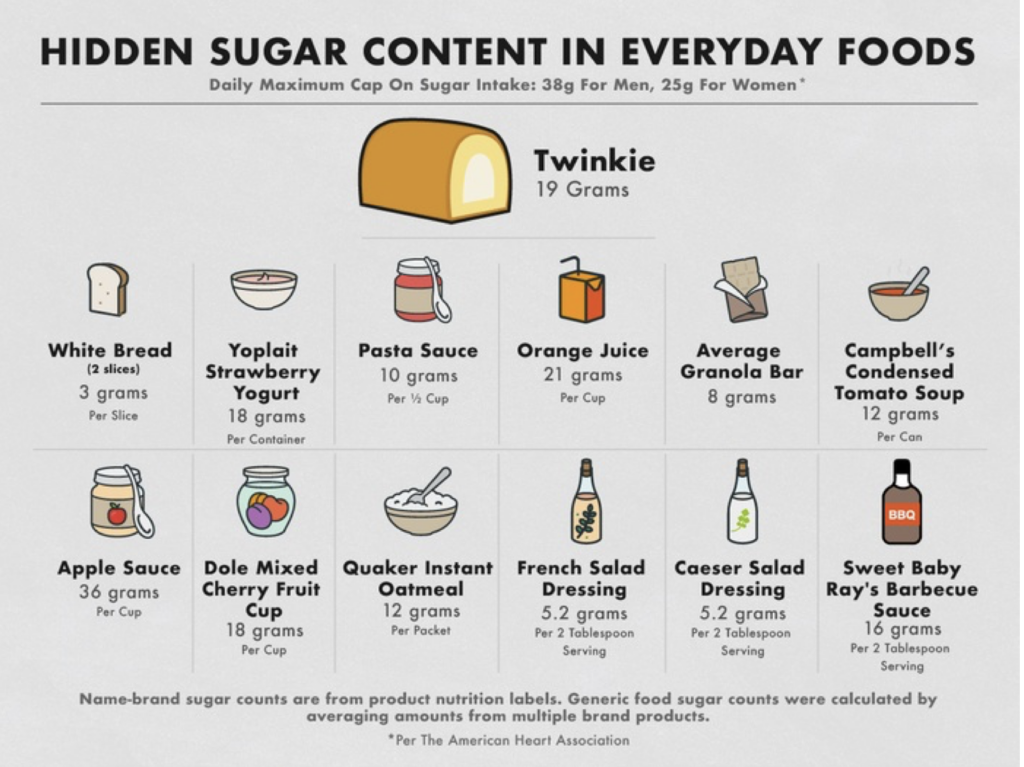
Many of my clients find that sugar has a profound effect on their appetite. Personally, I used to wake up starving when I lived on cereal and ice cream. Since I switched to an autoimmune friendly diet, my blood sugar and appetite are stable and appropriate. I limit my sugar intake to a couple of squares of dark chocolate most days. The only time I find myself starving and craving sugar is if I eat dessert more than two days in a row.
If you’d like an even deeper dive into how sugar impacts your body, check out the Huberman Lab podcast with Dr. Robert Lustig “How Sugar and Processed Foods Impact Your Health“. Spoiler alert, the fructose half of the sugar molecule acts like alcohol, it’s shunted directly to your liver since it can’t be used like glucose for energy. There, it contributes to fatty liver disease, high triglycerides, and impaired mitochondrial function, resulting in low energy and trouble losing weight.
What I’m experimenting with: Rucking. I had never heard of this until my doctor suggested it. Rucking is carrying a weighted backpack. I had never worried about osteoporosis because I am always on my feet, but my recent body composition scan showed osteopenia. Darn! I can’t run distances because of an old foot injury, but if addressing this is as simple as carrying an old backpack filled with water bottles when I’m walking the dogs, that I can do!
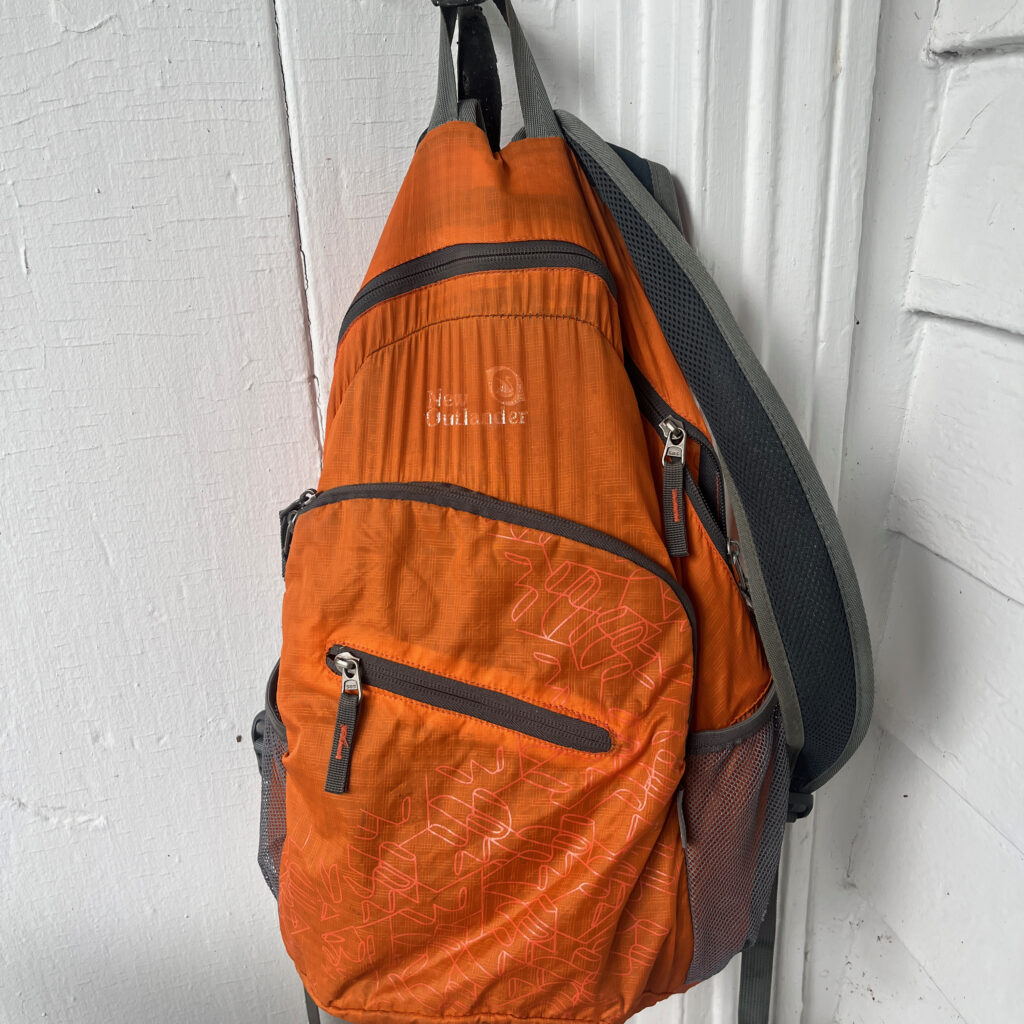
I expect I’ll eventually buy a nicer one that is designed to hold weight plates and work up to 1/3 of my body weight, but for now I’m just getting started with what I have. It’s one of those things you learn as a health coach: better to get started imperfectly than wait for everything to be perfect!
Note, a body composition scan is like a DEXA, but it also gives you information about muscle and fat distribution, so you can see how much visceral fat you have, for example. You can get one done without a prescription for $99 at Princeton Radiology.
Programs I’m leading: I lead a monthly autoimmune/inflammation lunch group for Eating for Your Health, formerly known as The Suppers Program. We meet once a month in Princeton to cook a healthy lunch and discuss a topic related to inflammation and autoimmunity. We discussed Part 1 of the Sugarless book in May and will be discussing Part 2 at the June 11th meeting.
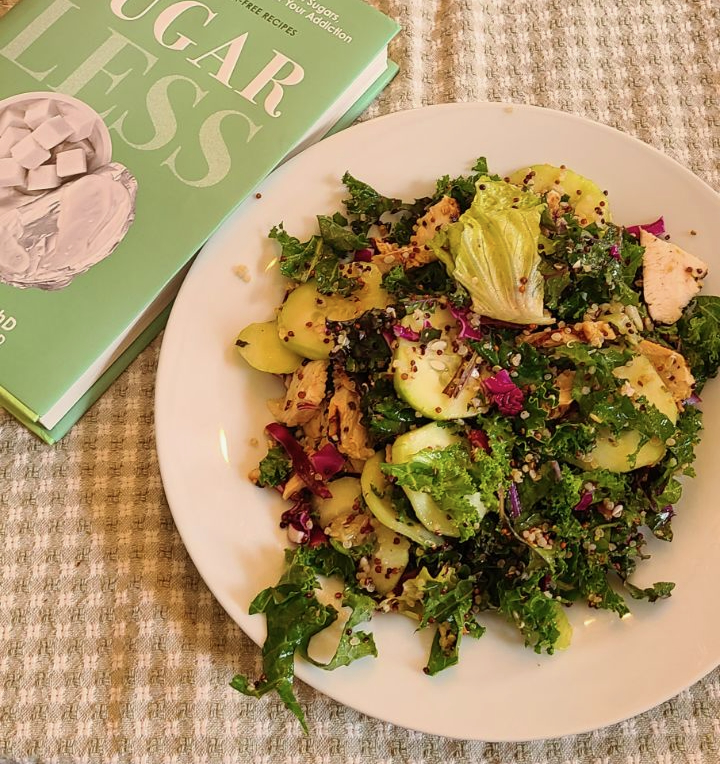
What’s in bloom: Rose “William Baffin”. Roses are known to be challenging to grow, but the Explorer series from Canada are hardy as well as pest and disease resistant. This climber has been here for 20 years and I’ve only treated it for insects twice. It climbs a south facing wall under an oak tree, so lots of sun in early spring and then shade much of the year. It blooms at the same time as the Geranium macrorrhizum and variegated Solomon’s seal at it’s feet which makes for a happy grouping in this dry shade.

What I’m cooking: Chicken Liver Paté. Liver and other organ meats contain 10-100 times the nutrients found in muscle meat. Liver is rich in vitamins A, D, E, K, B12 and folic acid, and minerals such as copper and iron. It’s also an inexpensive source of protein.
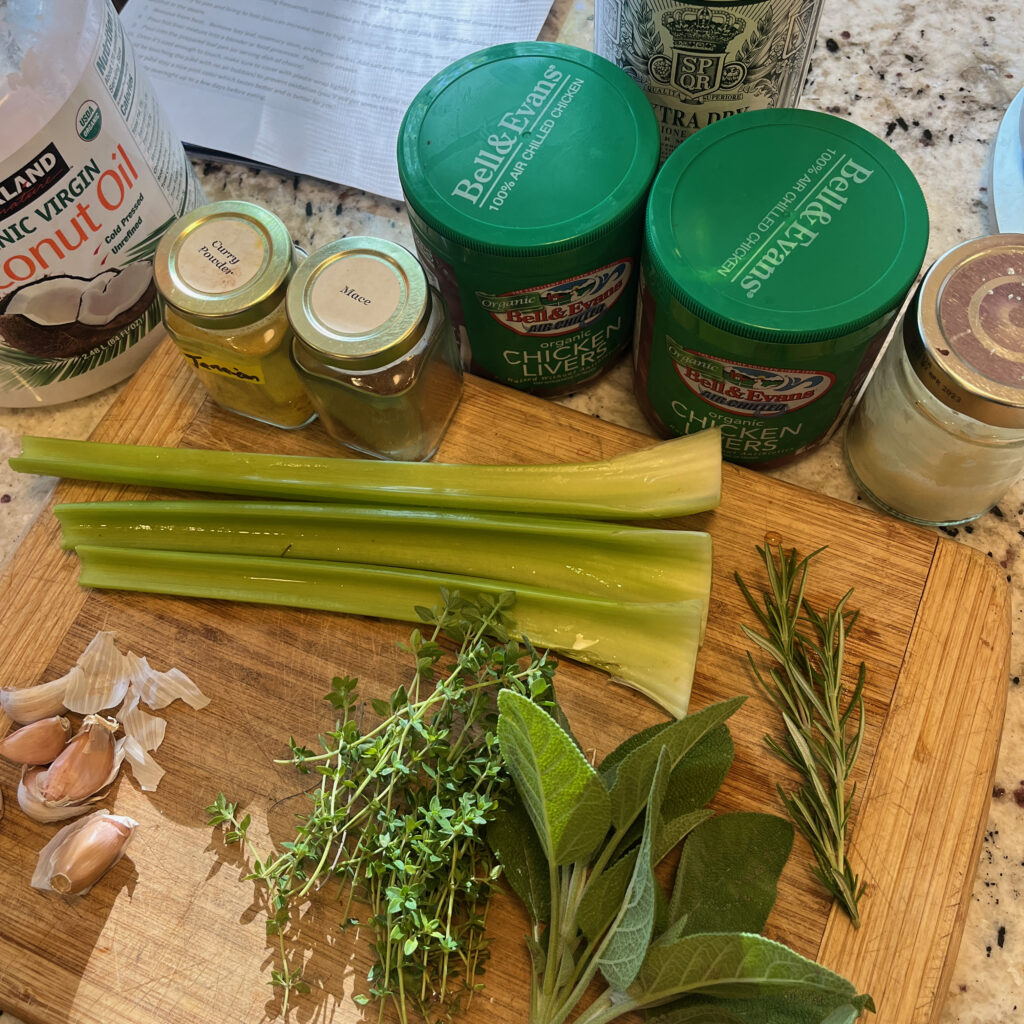
If you ate liver as a child, this might be just the trick to get you back to eating liver as it is delicious and you aren’t dealing with the rubbery texture. If you’ve never eaten liver, a small dab on a cracker can be a good place to start.
Ingredients:
1 carton/18 ounces chicken livers, rinsed and drained
1 large stalk celery, chopped
2 cloves garlic, peeled
7 fresh sage leaves or 1 Tbsp rubbed dry sage
1 small sprig rosemary or 2 tsp dried rosemary
4 sprigs fresh thyme or 3/4 tsp dried thyme
1/4 tsp mace
1/4 tsp curry powder (optional, be careful to find one without paprika or cayenne if you avoid nightshades)
1 bay leaf
1/4 cup rendered fat (beef, lamb, pork, duck etc). I use drippings from cooking oxtails.
1/3 cup cognac or dry sherry
1/4 cup coconut oil
1/4 tsp salt (unless using bacon fat)
Instructions:
Heat the rendered fat in a large sauté pan.
Add celery, garlic, and all herbs and spices. Cook, stirring frequently, until the celery is soft.
Add liver to the pan and cook with stirring until brown on the outside but still pink on the inside (3-4 minutes).
Add cognac or sherry to the pan and bring to a boil. Boil 2-3 minutes until you can’t smell alcohol in the steam.
Remove from heat and add the coconut oil and salt. Stir.
Remove bay leaves and any stems from rosemary and thyme.
Pour hot liver mixture into blender or food processor and pulse until smooth.
Line a 7.5 x 3.5 inch loaf pan with parchment paper and pour the purée in, smoothing the top.
Once it’s cool enough, cover with plastic wrap so there are no bubbles.
Refrigerate overnight or up to a few days. Serve with buckwheat crackers.
The paté also be cut in slabs and frozen.
That’s all for now.
Love, Anne

